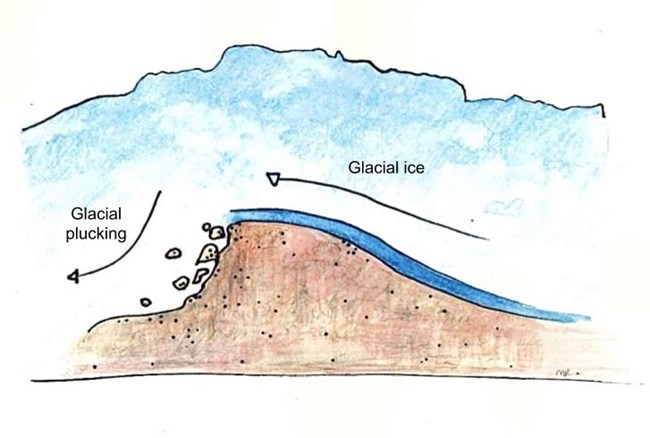Last updated: September 21, 2021
Article
The Geologic Story of the Beehive

NPS / W. Greene
Visitors taking on the challenge of hiking the Beehive, or even those who contemplate it from the comfort of Sand Beach or the Park Loop Road, can note its distinctive shape. The famous iron rungs and ladders ascend the sheer cliffs of the south face of the peak. This shape provides clues to the geological processes that have shaped Acadia National Park and that give such varied recreational opportunities.
The Beehive is a fine example of what geologists call a rouche moutonnée. This French term was coined by Swiss geologist Horace-Bénédict de Saussure during explorations of the Alps in 1786. Although these explorations predated modern glacial theory, de Saussure noted that many of the rocks he saw had distinctive smooth surfaces and applied the term. Later geologists determined that these peaks had been smoothed by the grinding process of glaciers passing across the surface.
The Beehive is a fine example of what geologists call a rouche moutonnée. This French term was coined by Swiss geologist Horace-Bénédict de Saussure during explorations of the Alps in 1786. Although these explorations predated modern glacial theory, de Saussure noted that many of the rocks he saw had distinctive smooth surfaces and applied the term. Later geologists determined that these peaks had been smoothed by the grinding process of glaciers passing across the surface.

NPS / M. Reading
So what does rouche moutonnée mean? Rouche is French for “rock” and moutonnée is derived from the French mouton, meaning “sheep.” Many geologists simply translate it as “sheepback or sheep-like rock.” But de Saussure may have had something more specific in mind. In his notes, he describes the rounded rocks as resembling a thick mane of hair or wig, which he terms moutonnée. This hairstyle, popular in France at the time, consisted of a swept up front and a gradually tailing off back and was often held in place with sheep fat!
Whether you imagine the peaks of Acadia as a herd of gently grazing sheep or a group of sophisticated 18th century Europeans, just know that you’re looking at the glacial history of Acadia National Park!
